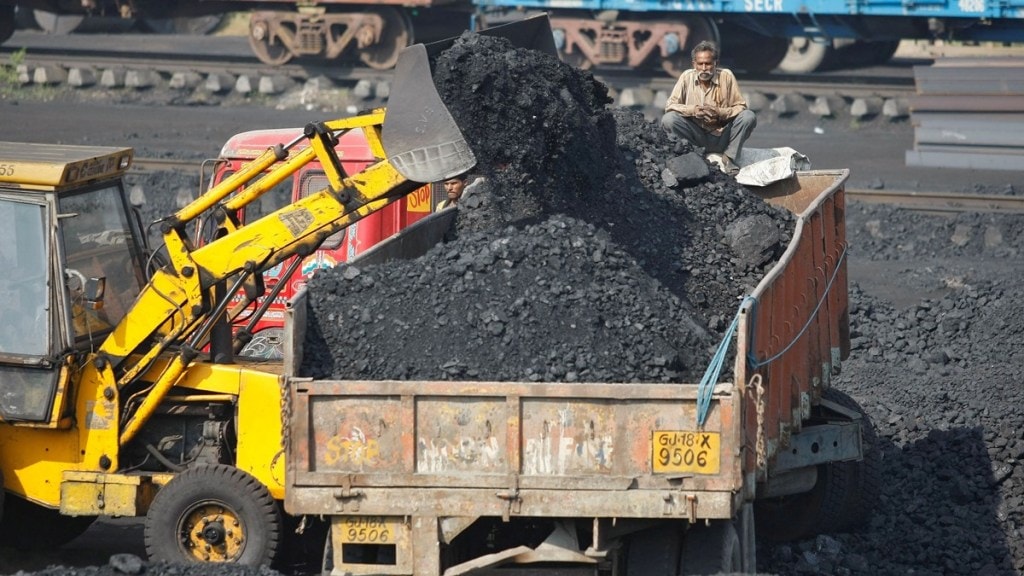Even as the hotly negotiated COP28 deal requires accelerated efforts among countries towards the “phase-down of unabated coal power,” it leaves room for India’s contingency plan to add more coal-based capacity than envisaged earlier in the short to medium term, to avert an energy crisis in the fast-growing economy.
This is because the final document or the UAE Consensus after the Dubai summit, dropped references to “limiting the permitting of new and unabated coal power generation,” under pressure from India and China.
Union power minister RK Singh has recently stated that the country would add another 30 giga watt (GW) to the nearly 50 GW of coal-based capacity that is already in the works. India also has no plans for retirement or re-purposing of coal-based power stations before 2030, even as the country sticks to the pledge to become carbon-neutral by 2070.
At present, coal-based power accounts for three-fourths of India’s power supplies, and by all indications, it would till have a share of over 60% even a decade from now. This is despite continued focus on renewable energy capacity, and investments being planned to bolster RE storage capacity and connectivity of the benign energy to the grid. A key challenge is to address the intermittency of RE.
“It will be different for countries like India (to reduce dependence on coal) as they will need to depend on fossil fuels for a longer period than advanced countries. India’s RE capacity will be accelerated but even that is not going to meet the fast-growing demand,” said Partha S. Bhattacharya, former Chairman of Coal India.
The final deal at the COP28 summit in Dubai called for “transitioning away from fossil fuels in energy systems, in a just, orderly and equitable manner, accelerating action in this critical decade” which came against the “phase-out” of fossil fuels as pleaded by more than 100 nations.
For India, this of course means adding RE capacity at a greater pace but not doing away with its dependence on coal to meet its energy requirements and demand.
“We are a growing economy and for us to grow at this pace and meet growth targets, energy security needs to be in place. The share of conventional coal coming down and RE capacity to go up will happen over years,” said Vikram V, Vice President and Co-Group Head at ICRA, Corporate Ratings. “We should have enough buffer to meet our demand. In this scenario we might even add some coal-based capacity,” Vikram said.
Another aspect that needs attention is financing of RE projects. “In order to make this agreement actionable, what is required is financing for the developing countries to sort of absorb emissions,” Bhattacharya said. “Developing countries expect the developed countries to come forward with their money and make the technology available.”
“As the scale up of RE capacity happens, the financing requirement will go up and that’s when the developed countries will have to step up and contribute, in terms of getting greater access to low cost funding,” Vikram said.
“To those who opposed a clear reference to a phaseout of fossil fuels in the COP28 text, I want to say that a fossil fuel phase out is inevitable whether they like it or not. Let’s hope it doesn’t come too late”, UN chief António Guterres said in a post on X while reacting to the adoption of the document.
“Until the battery storage and liquid hydrogen become cost competitive, we will continue using coal power to maintain our energy security and affordability,” said Ashok Khurana, Director General of Association of Power Producers “Our objective is to supply quality and affordable power to all and we are not going to compromise on that.”
As per the projections of National Electricity Plan for the period 2022-32, the required coal and lignite based installed capacity will be 283 GW by 2031-2032 as against the present installed capacity of 214 GW.
As far as the final agreement at the COP28 summit goes, experts say that it is an agreement in principle and lacks a comprehensive account of all factors in order to achieve carbon emission targets.

